How to Install a GFCI Outlet with 4 Wires (9 Simple Steps)
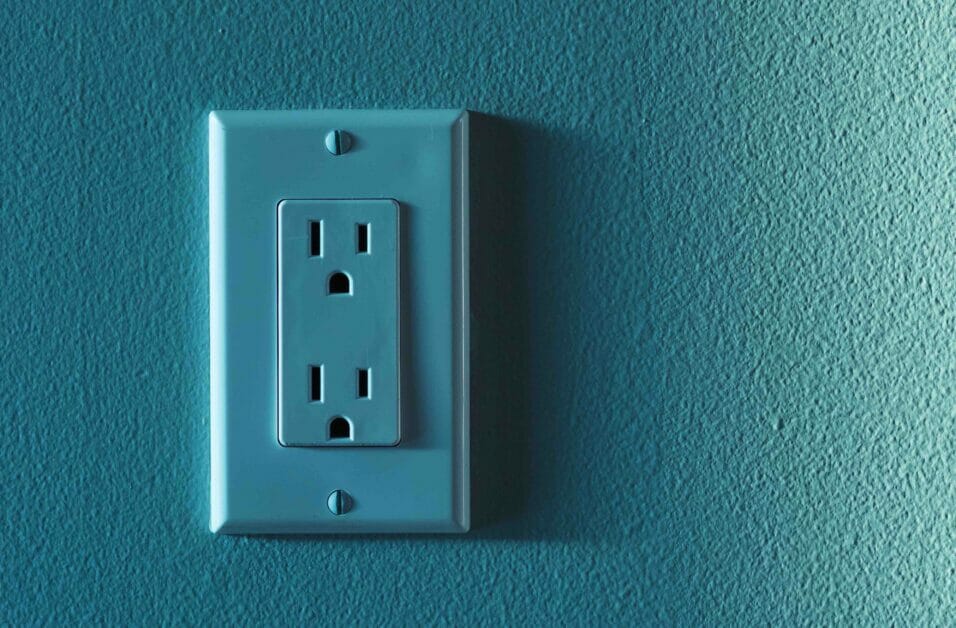
Wiring a GFCI outlet is like wiring a regular one, but the extra terminals can be confusing.
GFCI outlets follow the same wiring scheme as regular ones do, but you will see two terminals marked ‘hot’ or ‘black’ and two marked ‘neutral’ or ‘white,’ and one each will also be marked as LINE and LOAD. Additionally, you will see a ground terminal. So, how do you connect four wires to five terminals?
Quick Summary: To install a GFCI outlet with 4 wires, first, ensure you know which of the two cables is the power supply (or LINE) cable and which is coming from the load or outlet to which you will carry power. Connect the black (hot) wire of the power supply cable to the brass terminal on the line row, the white (neutral) wire to the silver terminal on the line row, and the bare/green (ground) wire to the ground terminal.
Then, do the same for the black and white wires of the second LOAD cable by connecting them to the corresponding LOAD terminals. After connecting these 4 wires, combine and connect the ground wires to the ground terminal with a green screw.
This article explains the procedure in 8 steps, including how to test the GFCI outlet and load afterward.
GFCI Outlets
A GFCI outlet is an RCD (Residual Current Device).
It’s like an ordinary outlet but with extra protection against electric shock in case you plug in a faulty appliance or device. It senses minor fluctuations in current flow and shuts off automatically within a fraction of a second. This makes them ideal for potentially wet places like kitchens, bathrooms, and outdoor areas. Compared to regular outlets, however, GFCI ones are a bit larger and more expensive.
Another advantage is that GFCI outlets can share their protection mechanism with other regular outlets, which I will show.
Wiring a GFCI Outlet
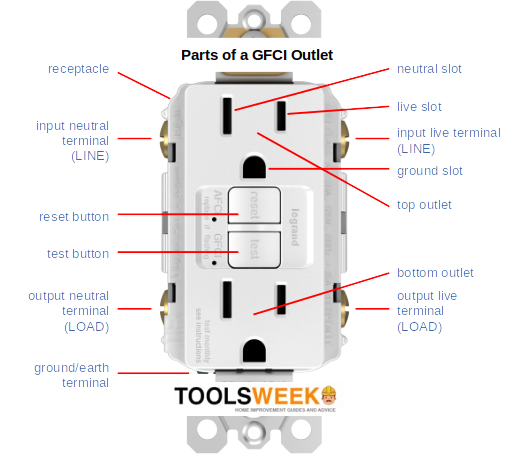
Normally, if it’s a standalone GFCI outlet, there are three wires to connect:
- The hot black wire provides current to the attached load and connects to the GFCI outlet’s brass LINE terminal.
- The neutral white wire provides a return path for the current and connects to the GFCI outlet’s silver LINE terminal.
- The bare copper or green/yellow wire is the ground wire that provides an additional local grounding and connects to the GFCI outlet’s ground terminal.
Note that you connect the hot and neutral wires (of the power supply cable) to the two LINE terminals. But when connecting an extra outlet (or load), you will have three additional wires to connect to the same outlet. That’s what the LOAD row is for. The wires from the LOAD cable will connect to the LOAD terminals on the GFCI outlet. I will show you how to do it.
So, the extra 4th wire is from the second cable arranged to provide power to another device on the circuit downstream. For example, it might be a secondary outlet above a kitchen counter, as shown below. You only use the two extra load terminals for extra loads, not the line terminals.
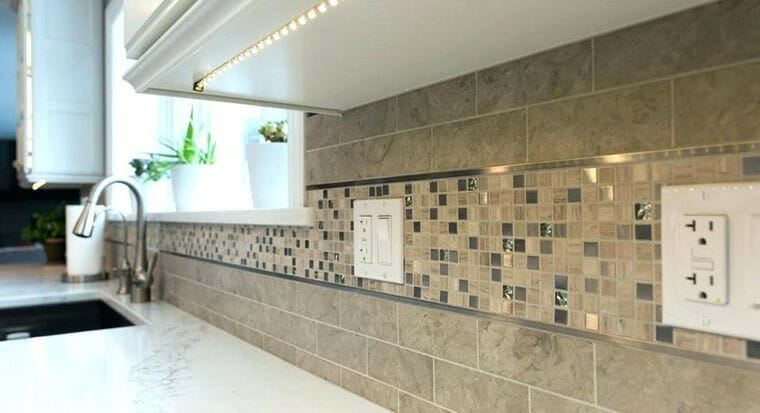
I’ll show you how to distinguish the two cables in Step 4 while wiring. Ensure you connect the right wire to the right terminal or connector.
The above wiring scheme is according to the US wiring system for domestic AC. If you live elsewhere, the colors and terminals may differ, including the outlet’s design.
Steps for Wiring a GFCI Outlet
Here are the steps for wiring a GFCI outlet according to the above wiring scheme:
Step 1: Turn the Power Off
For personal safety, you must turn the power off to the circuit before starting.
Switch off the circuit breaker for the circuit you will be working on. Use a tester to ensure no current is flowing.
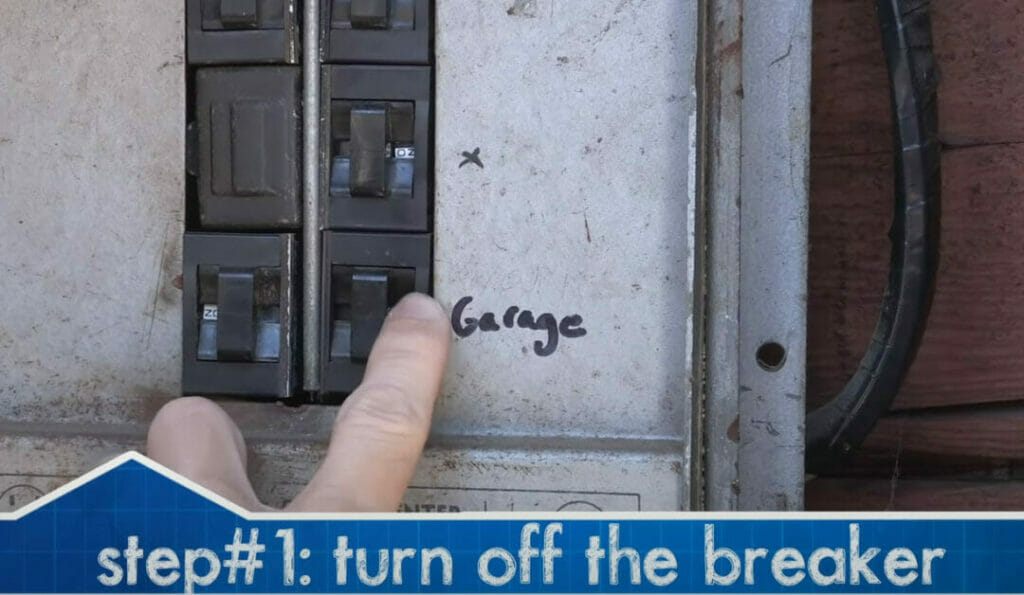
Step 2: Remove the Existing Outlet (If Applicable)
This step only applies if you replace an existing outlet with a GFCI one; otherwise, skip it.
Remove the cover plate from the outlet by removing the screws on it. Then, gently pull it off and the outlet by holding its two opposite sides. Once out, disconnect the wires from the terminals at the back.
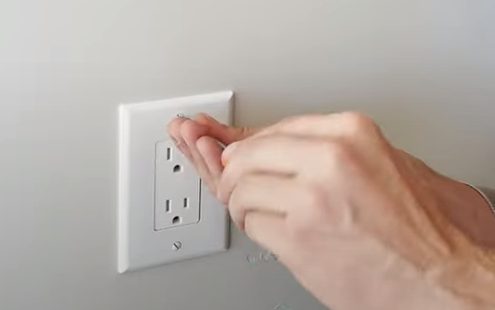
Step 3: Prepare the Box and Wire Ends
Before installing a GFCI outlet, ensure the box is the right size and set it firmly inside the wall.
Pass the first cable, then the second from the extra load or outlet. The wires should extend at least 4-6 inches from the box. Strip their ends about half an inch.
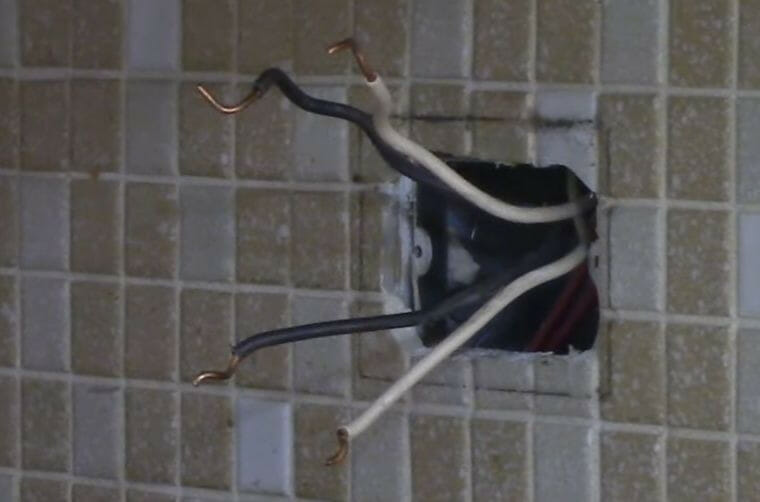
Step 4: Identify the Cables
Ensure you can identify the two cables.
One cable provides power to the outlet, and the other provides power to another device on the circuit. You can skip this step if you can distinguish the two with certainty.
If you’re unsure which cable is which, I suggest you use a non-contact tester to find the one that is live when you turn the power on at the panel. When the tester is close to the live black wire, and its light turns red, that’s the one from the power supply cable.
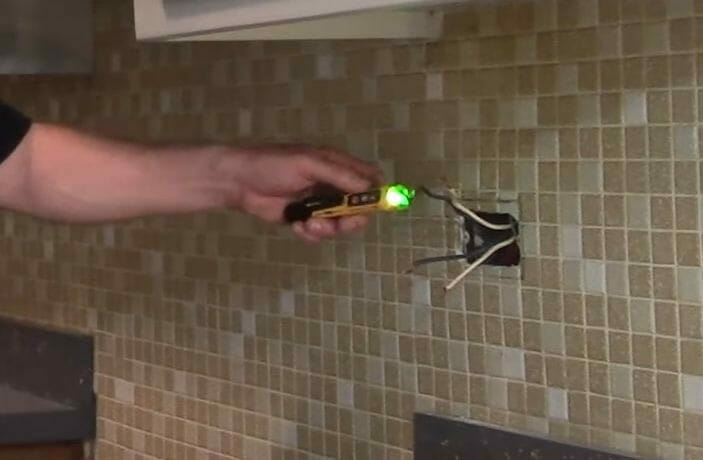
If you’re uncomfortable with getting close to live bare wires, keep the power turned off and do this instead:
Temporarily put a wire cap over the hot and neutral wires from one cable, which must be from the SAME cable (NOT one from each of the two), and connect the hot and neutral wires from the other one to the outlet’s LINE terminals (see Step 5). Attach the outlet (Step 7) and power the outlet on (Step 8).
See if the outlet has power. Press the RESET button if necessary. If it does, the connected cable is the power supply or LINE wires, and the capped ones are the LOAD ones. If you don’t get power, it’s probably the other way around, i.e., the capped wires are the power ones, and the connected wires are the LOAD wires. However, you should repeat the test by swapping the cables to confirm this.
Once identified, label the cables as LINE (power supply) and LOAD (power carrier).
Step 5: Connect the Line Wires
This is the main step where you will wire the GFCI outlet.
In this step, you will only connect the wires from the LINE cable to the LINE row. See the illustration I gave earlier. Attach the LINE wires to the GFCI’s terminals (or connectors) as follows:
- Connect the black wire to the brass screw on the line terminal marked ‘Hot’ or ‘Black.’
- Connect the white wire to the silver screw on the line terminal marked ‘Neutral’ or ‘White.’
The power supply wires (black and white) must be connected to the LINE row, not to the LOAD row, which is for a different purpose (see below under ‘Connecting Multiple Outlets’). If the GFCI terminal is new, the load terminals will probably be covered by tape.
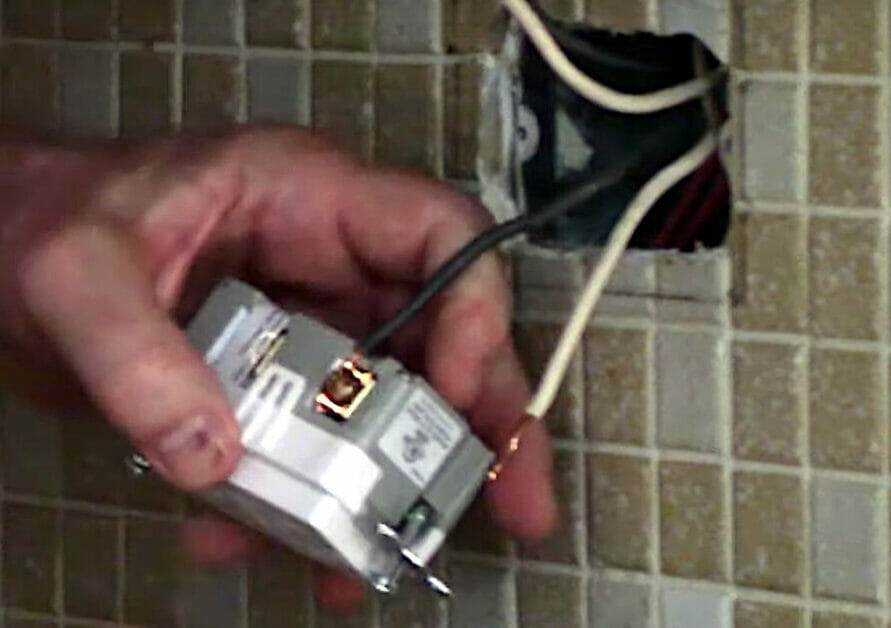
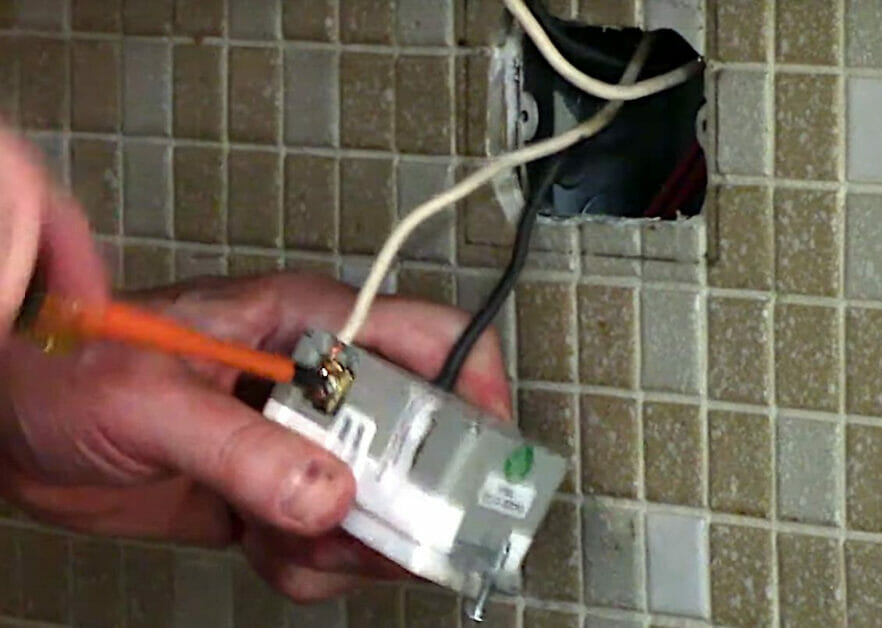
Use nose pliers to form a hook if you need to wrap a wire around its terminal. If the ground wire is bare copper, ensure it doesn’t touch other terminals.
Step 6: Connect the Load Wires
This time, we will repeat Step 5 with the wires from the LOAD cable, which will connect to the LOAD terminals on the outlet.
The other end of the LOAD cable will connect to the LINE terminals of a secondary outlet, as illustrated below. The primary one is shown on the left, which we are wiring.
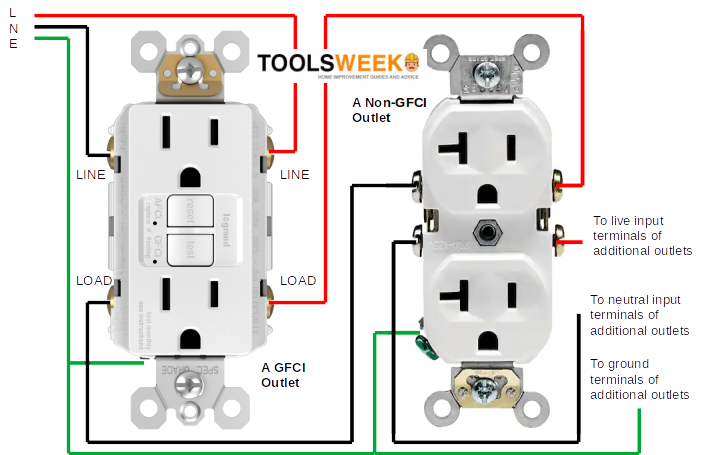
Connect the hot and neutral wires from the other outlet’s line terminals (or another load, such as a light switch) to the primary GFCI outlet’s load terminals. To recap and ensure you’ve done it properly:
- All black (hot/live) wires should only be connected to a brass terminal marked ‘Hot’ or ‘Black,’ but the one from the power cable should be on the LINE row and the one from the load to the LOAD row.
- All white (neutral) wires should only be connected to a silver terminal marked ‘Neutral’ or ‘White,’ but the one from the power cable should be in the LINE row and the one from the load to the LOAD row.
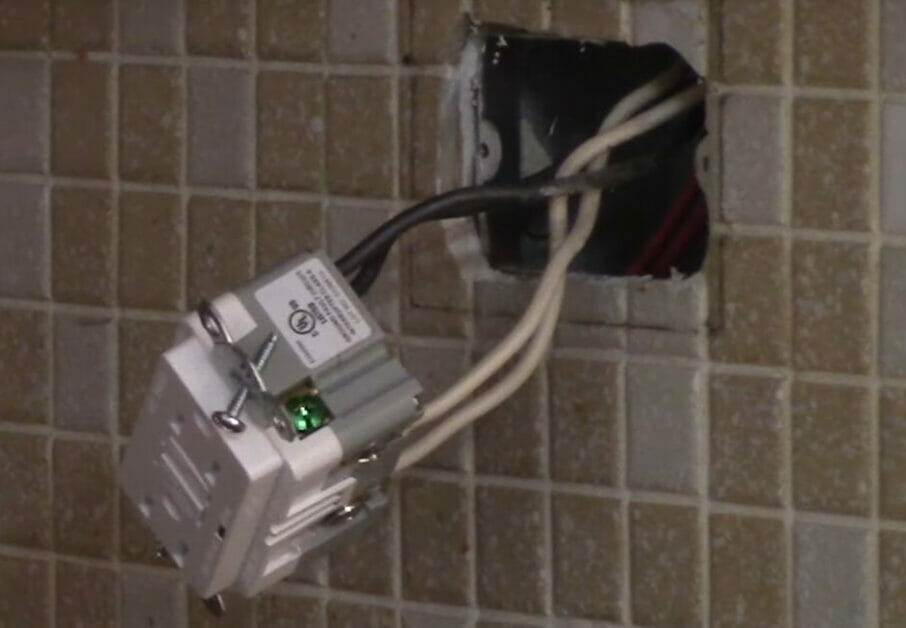
The load row on the GFCI outlet can also connect additional loads to provide them with the same protection. Connect the corresponding hot and neutral load wires to the right terminals on the load row, just as you did for the secondary outlet. Optionally, you can apply the same method of combining like wires if you connect multiple extra loads to the GFCI outlet, as indicated on the right side of the illustration.
For the remaining bare copper or ground wires, use wire connectors to combine them all and then connect them to the single ground terminal marked ‘GRD’ or ‘Ground,’ which usually has a green screw.
Step 7: Attach the GFCI Outlet
After wiring the GFCI outlet, please attach it to the box and the cover plate.
Ensure all the screws are tight.
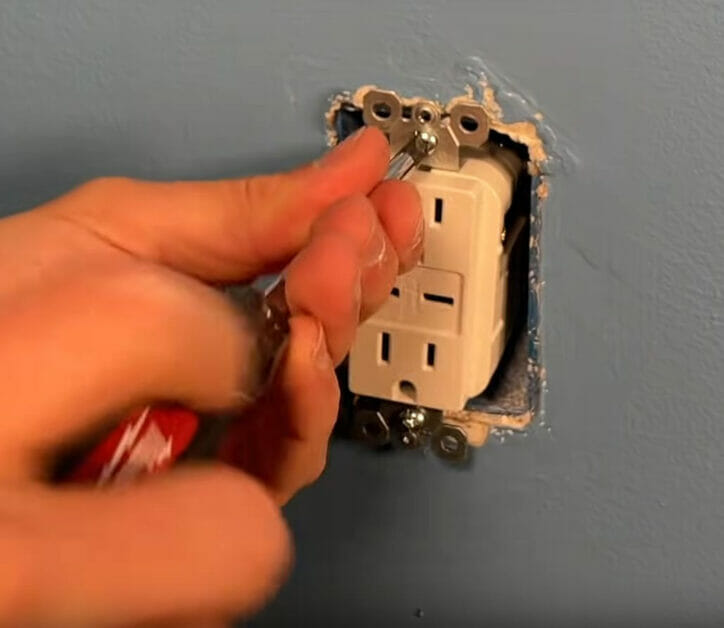
Step 8: Power the Outlet On
When the GFCI outlet is wired, inserted, and attached, and the cover plate is on, it’s ready to use.
You can now give power to the outlet by switching the breaker on again.
Step 9: Testing
You should test the GFCI outlet after wiring it.
All GFCI outlets have ‘test’ and ‘reset’ buttons. Follow these steps for testing:
- Plug a light bulb or other load into the outlet.
- Press the RESET button if the light doesn’t turn on automatically. You should only need to do this the first time after a new installation, rewiring, or a trip.
- Now, press the TEST button. The light should turn off, indicating the GFCI outlet is working fine (because it tripped).
- Press the RESET button again to reset the GFCI outlet’s normal operation.
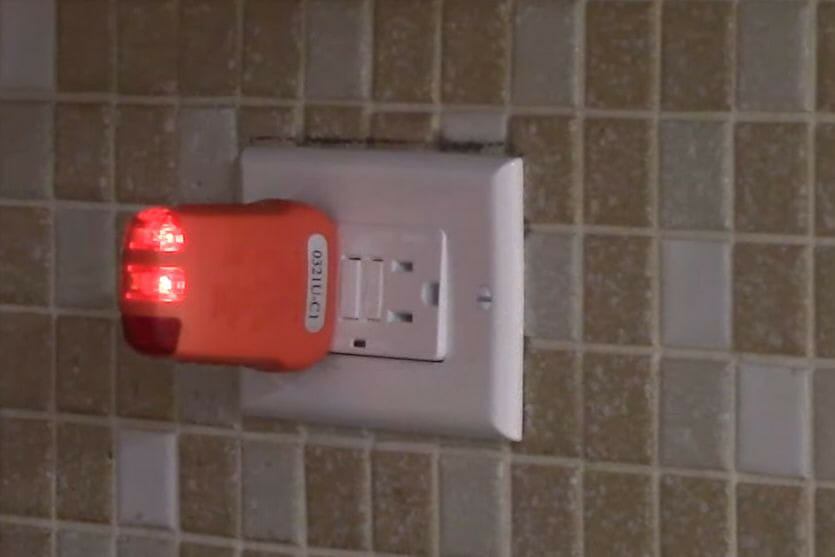
If you connected a secondary outlet to the primary GFCI one, test the other one. Plug the load into the secondary outlet and press the TEST button on the primary one. It should turn off. Reset the GFCI outlet after testing.
I recommend you label the extra load or outlet “GFCI Protected” so you know it’s connected to a GFCI outlet.
References
ArchAngel Electric (Power outlets above a kitchen counter). https://archangelelectricinc.com/services/
GFCI outlet. https://www.walmart.com/ip/GE-15A-GFCI-Outlet-White-32073/52213771
Video References
CircuitBread
Everyday Home Repairs
FIX IT Home Improvement Channel
MrFixItDIY
TheRenderQ
